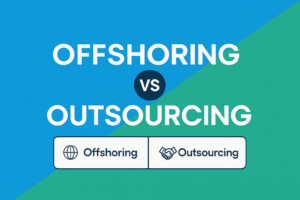Are you looking to enhance your development team with a skilled Redux developer but unsure where to start? Finding a Redux Developer with extensive expertise in React and Redux to drive your development projects ahead is just one step of a long process.
To hire a Redux developer, you need to go through a hiring process that involves identifying your needs, posting a job description, conducting interviews, testing the candidates’ skills and competencies, and extending an offer to those who meet your standards.
Read on to learn more about Redux developers and how to hire one!
How to Hire a Redux Developer? Key Steps
Hiring a Redux developer for your upcoming development project can be challenging if you don’t take the right measures. For example, you must ensure the prospective candidate is well-versed in JavaScript and familiar with Redux middleware like Thunk or Saga, or risk your project falling behind.
Below is a step-by-step guide that’ll help you hire the best Redux developer for your projects:
1. Identify the Skills You Need
Identifying the right technical and soft skills in software engineering is vital for the success of your web development projects. When recruiting developers, especially those who will work on the front end, it is crucial to look for candidates who not only excel in Redux and its integration with user interface libraries like React but also demonstrate strong problem-solving abilities, exceptional communication skills, and a commitment to providing ongoing support and collaboration.
The best developers can effectively contribute to and grow with your team, enhancing both project outcomes and team dynamics.
Here are specific qualities and skills to look for in a Redux developer
- Strong Foundation in React: Since Redux is an advanced tool used alongside React, ideal candidates should be comfortable with React before they dive into Redux. Look for developers who have solid experience with React’s fundamentals, lifecycle, and state management capabilities. They should be able to handle APIs and web requests effectively and understand the inner workings of Redux apps, including actions, reducers, and the Redux store.
- The basics of JavaScript: The most important skill for a Redux developer is the mastery of JavaScript basics. Before hiring, you should evaluate their knowledge of JavaScript’s foundational concepts, including code structure, variables, data types, arrays, and more. Their expertise in these basic JavaScript concepts will be useful in creating high-performance apps
- Experience with Modern Redux: Ensure the candidate is familiar with “modern Redux,” including the Redux Toolkit and the React-Redux hooks API. These tools represent the current standard for writing Redux logic and are designed to simplify the process. Check for experience configuring and using the Redux Toolkit in projects and effective use of hooks for connecting Redux with React components. The candidate should at least know how to create dynamic web apps using the latest web technologies.
- Understanding of Application Architecture: A proficient Redux developer should have a clear understanding of how to structure an application using Redux to manage state effectively. This includes knowing when and why to use Redux and how to integrate it without overcomplicating the application architecture.
- Debugging Skills: Debugging is like being a detective in the world of programming. A Redux developer should be able to hunt down any bugs that threaten to derail app development. With a keen eye for detail and a knack for problem-solving, they can easily fix bugs and ensure apps are fully functioning.
On top of these technical skills, ensure the developer also possesses soft skills such as:
- Problem-Solving Skills: Redux is often implemented to manage complex states in an application, which requires excellent problem-solving skills. Candidates should demonstrate an ability to troubleshoot and optimize Redux code, ensuring it integrates smoothly with React components.
- Adaptability and Continuous Learning: Given the fast-paced nature of web development technology, including frequent updates to Redux and React, candidates should show a commitment to continuous learning and adaptability. Look for developers who are up-to-date with the latest changes and best practices in the ecosystem.
- Communication Skills: Effective communication is crucial for complex project work, especially when it involves explaining technical details to team members who might not be familiar with Redux. Candidates should be able to articulate the rationale behind architectural decisions and collaborate with other team members on solutions.
Remember that you can only be sure a developer possesses the above skills when they demonstrate practical experience and a track record in Redux web development. Ensure you carefully examine the applicant’s portfolio and employ a rigorous interview procedure incorporating hands-on skill testing.
2. Look for Places to Hire Redux Developers
After identifying the skills you need in a Redux developer, the next step is to craft a job description that fits the role you want to fill and explore different hiring alternatives. There are numerous places to hire a Redux developer, and some of the best ones include:
- Remote Recruitment Agencies
The salary for developers and programmers varies based on various factors, including their level of experience and location. If you want to lower your hiring costs without compromising on talent quality, start looking at IT remote recruitment agencies.
These agencies assure you of the best talent by broadening your worldwide reach. By identifying the top candidates to fit your project’s unique requirements, an IT remote staffing company like DistantJob can assist you with your Redux developer hiring needs.
- Freelance Platforms
Freelancers are an excellent choice if you need a Redux developer for a brief assignment. Platforms such as Toptal and Upwork have some of the best developers from various locations and allow you to review portfolios and easily find professionals with the skills you need.
3. Perform Extensive Assessments
Assessments are the most effective means of determining a candidate’s level of competency. The best way to get started is by assessing the skills your company needs rather than just general online assessments.
Assessing a candidate’s grasp of Redux helps you gauge their aptitude for performing their role. It allows you to learn whether the candidate is proficient enough with Redux’s principles and can successfully combine it with frameworks such as React or Angular to improve the efficiency of their development process.
Remember that finding the best Redux developers depends on how good your initial assessment processes are. This could be asking them Redux interview questions, conducting code tests, or even a comprehensive review of their past Redux development work.
Here are a few ways to carry out an assessment:
Evaluate their technical background
Technical background and a clear understanding of their requirements are a must. Asking them some of the best Redux interview questions is a great way to evaluate your potential new hires. This allows you to evaluate their proficiency and problem-solving skills in working with the framework. You can complement this with hands-on assessments such as:
- Building a basic Redux component: Assign candidates to build a simple React-Redux component from the ground up. This will allow you to test their comprehension of state management, event handling, component structure, and JSX syntax.
- Written Response Test: This helps assess how well candidates can explain their understanding of the main ideas and best practices of Redux. It gives them a chance to showcase their knowledge of Redux and their skill at effectively conveying that knowledge.
Evaluating a candidate’s understanding of Redux can provide valuable insights into their ability to efficiently manage and centralize application state. By assessing their familiarity with this widely-used JavaScript library, companies can ensure that potential hires have the necessary skills to build robust and scalable user interfaces.
4. Conduct an Onboarding Process
Once you’ve interviewed and secured your ideal candidate, the only thing remaining is to facilitate a smooth onboarding process that allows them to learn more about your company and its operations.
The first step is to ensure the new hire is familiar with your development environment and code standards. This includes acquainting them with your chosen continuous integration and continuous deployment (CI/CD) process and version control techniques.
A Redux developer also needs to comprehend the project’s architecture and the project management tools you use. These might be Trello, Asana, or any other tool that supports agile development methodologies and task tracking.
An integral component of onboarding your new Redux developer also includes mentoring and training. Frequent pair programming sessions and on-the-job training facilitate the new hire’s assimilation into your coding workflow.
It acquaints them with intricate React Redux-specific ideas such as component structure, lifecycle, state management, and various techniques for debugging and performance optimization.
11 Best Redux Interview Questions (Answered)
These are the 11 most frequently asked Redux interview questions:
1. Explain what ‘actions’ are in Redux
Simply put, actions are events. Actions work by sending data from user interaction, API calls, or other internal events, and form submission, to the store. These are the only possible sources of information for the store. You send them to the store with the method store. dispach().
Redux documentation gives a simple example of an action that represents adding a new todo item:
Const ADD_TODO = ‘ADD_TODO’
{
type: ADD_TODO,
text: ‘Build my first Redux app’
}All actions are plain JavaScript objects and need to have a type property. This property should indicate the type of action being performed.
Here´s another example where you can also show a function and a call to action:
{
type: LOGIN_FORM_SUBMIT,
payload: {username: ‘alex’, password: ‘123456’}
}
Actions are just created with ‘action creators,’ which are simply functions that return the actions.
function authUser(form) {
return {
type: LOGIN_FORM_SUBMIT,
payload: form
}
}
Then, to call the action somewhere in the app, you simply use the dispatch method:
dispatch(authUser(form));2. What are ‘reducers’ used for in Redux?
Reducers specify how the application’s state changes in response to actions. It is a pure function that takes the previous state and an action, transforming it into the next state.
Here’s an example of storing the currently selected visibility filter and the actual list of todos for a todo app:
{
visibilityFilter: ‘SHOW_ALL’,
todos: [
{
text: ‘Consider using Redux’,
Completed: true,
},
{
text: ‘Keep all state in a single tree’,
completed: false
}
]
}
3. Tell me the responsibility of the Store in Redux and give an example of how to create it
The Store brings the reducers and actions together. It accomplishes the following tasks, as noted in the Redux documentation:
- Holds application state
- Allows access to state via getState()
- Allows state to be updated via dispatch(action)
- Registers listeners via subscribe(listener)
- Handles unregistering of listeners via the function returned by subscribe(listener)
Here’s an example of how to create a store importing and then passing the previous example of combineReducers():
import {createStore} from ‘redux’
import todoApp from ‘./reducers’
let store = createStore(todoApp)Another way to accomplish this is by specifying “the initial state as the second argument to createStore(). This is useful for hydrating the state of the client to match the state of a Redux application running on the server.”
let store = createStore(todoApp, window.STATE_FROM_SERVER)4. How can we use connect from React Redux?
To use connect from React Redux, we need to follow certain steps to use our store in our container:
- Use the mapStateToProps(): This would map the state variables from our store to the props which we specify.
- Connect the above props to our container: The object returned by the mapStateToProps component is connected to the container.
Here´s an example:
import React from 'react';
import { connect } from 'react-redux';
class App extends React.Component {
render() {
return <div>{this.props.containerData}</div>;
}
}
function mapStateToProps(state) {
return { containerData: state.appData };
}
export default connect(mapStateToProps)(App);
function mapStateToProps(state) {
return { containerData: state.data };
}
export default connect(mapStateToProps)(App);5. How can you add multiple middlewares to Redux?
For adding multiple middlewares to Redux, we can use applyMiddleware. You can pass each piece of middleware as the new or another argument, depending on your preferences. The purpose is to pass every single piece of middleware.
Here´s an example:
import { createStore, applyMiddleware } from 'redux'
const createStoreWithMiddleware = applyMiddleware(ReduxThunk, logger)(createStore);
6. What are the differences between mapStateToProps() and mapDispatchToProps()?
mapStateToProps() is a function used to provide the store data to your component. On the other hand, mapDispatchToProps() is used to provide the action creators as props to your component.
According to the documentation, if mapStateToProps() argument is specified, the new component will subscribe to Redux updates. So, anytime the store is updated mapStateToProps() will be called. And with mapDispatchToProps every action creator wrapped into a dispatch call so they may be invoked directly, will be merged into the component’s props.
Here´s an example:
function mapStateToProps(state) {
return { todos: state.todos }
} function mapDispatchToProps(dispatch)
{ return { addTodo: bindActionCreators(addTodo, dispatch) }
}
export default connect(mapStateToProps, mapDispatchToProps)(Todos);7. How do you select the initial state in Redux?
To select the initial state in Redux, you need to exceed the initial state as a second dispute to “create store.”
Here´s an example:
const rootReducer = combineReducers({
todos: todos,
visibilityFilter: visibilityFilter
});
const initialState = {
todos: [{id:123, name:'sudheer', completed: false}]
};
const store = createStore(
rootReducer,
initialState
);
8. What is the main difference between React Redux and React Context?
To use React-Redux in an application, you need to code it separately and then merge them. Redux is more powerful than React Context and it provides numerous features. React Context can be used directly in the application, and it’s best for passing the data to the deploy component nested components. However, it doesn’t include a great number of features.
9. What is the purpose of the constants in Redux?
With constants, you can easily find all usages for that specific functionality across the project when you use an IDE. Constants also prevent you from introducing errors caused by typos (In such cases you’ll get a ReferenceError notification).
Normally we save constants in a single file (constants.js or action Types.js). Here’s an example:
export const ADD_TODO = 'ADD_TODO';
export const DELETE_TODO = 'DELETE_TODO';
export const EDIT_TODO = 'EDIT_TODO';
export const COMPLETE_TODO = 'COMPLETE_TODO';
export const COMPLETE_ALL = 'COMPLETE_ALL';
export const CLEAR_COMPLETED = 'CLEAR_COMPLETED';
You can use them during actions creation (actions.js):
import { ADD_TODO } from './actionTypes';
export function addTodo(text) {
return { type: ADD_TODO, text };
}
Or in reducers (reducer.js):
import { ADD_TODO } from './actionTypes';
export default (state = [], action) => {
switch (action.type) {
case ADD_TODO:
return [
...state,
{
text: action.text,
completed: false
}
];
default:
return state
}
};
10. Explain what are Redux forms and its major features
Redux forms help to enable a form in React to use Redux for storing all of its states. They can be used with raw inputs in HTML5.
Its major features are:
- Field values persistence through the Redux store
- Validation and submission
- Formating, parsing, and normalization of field values.
11. How can you structure the top-level directories in Redux?
Redux applications have different top-level directories, such as:
- Components: Used for dumb components unfamiliar with Redux.
- Containers: Used for smart components connected to Redux.
- Actions: Used for all the action creators; the file name corresponds to the part of the app.
- Reducers: Used for all the reducers; the file name corresponds to the state key.
- Store: Stores are used for store initialization – this structure works best for small and medium-size applications.
Redux Interview Questions for Remote Candidates
One thing is hiring a developer; a completely different thing is hiring a remote one.
If you’re interested in accessing a wider global pool of talent while lowering your costs, these are some of the best remote interview questions that will help you identify which candidates are great remote Redux developers:
- Have you worked remotely? If you have, what did you like the most, and what did you dislike?
- What are the best ways to perform remote code reviews?
- How do you deal with the challenges of working with remote development teams?
- What are your favorite working hours?
- How do you schedule your workday?
- Tell me about a time you had a misunderstanding/conflict with remote coworker. How did you handle it?
- Who´s the most difficult person you ever worked with, and why?
- What do you do when you get stuck with a task?
- What are your favorite tools/workflows to ensure quality control?
Final Thoughts
Redux is a crucial JavaScript library, and developers rely on it to manage the state of an application. This improves the app’s user experience, speeds up load times, and streamlines the development process.
A skilled Redux developer is a must if you’re running web development projects. They can help with code performance optimization and ensure that the application complies with industry standards and best practices.
To make an informed choice, follow the above tips to hire a Redux developer who guarantees project success. If you want to hire the best Redux Developers, DistantJob is one of the best places to look.
We’re a leading IT remote recruitment agency that headhunts overseas for top tech talent that are a perfect culture fit. We also offer the option of handling your payroll and HR for optimal experience and maximum retention.
Contact us today to hire the best Redux developers for your next project!





